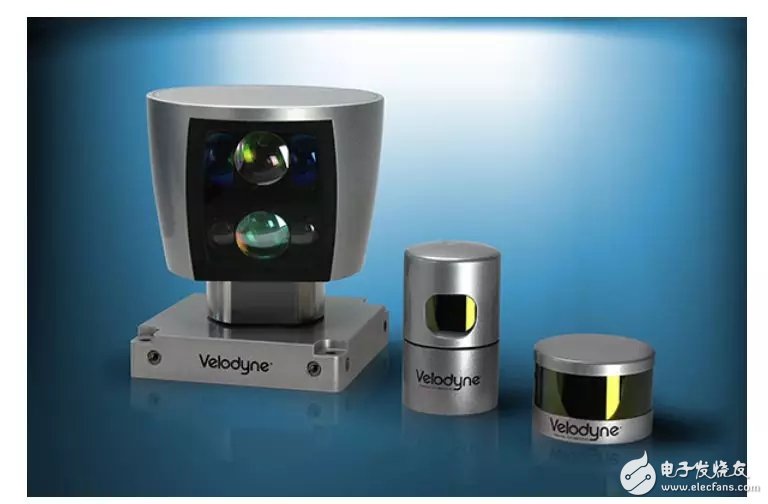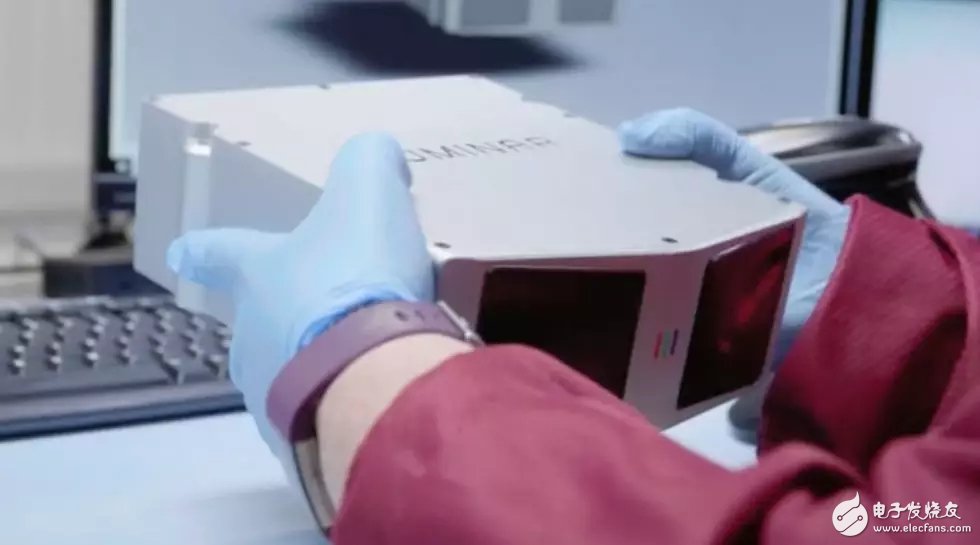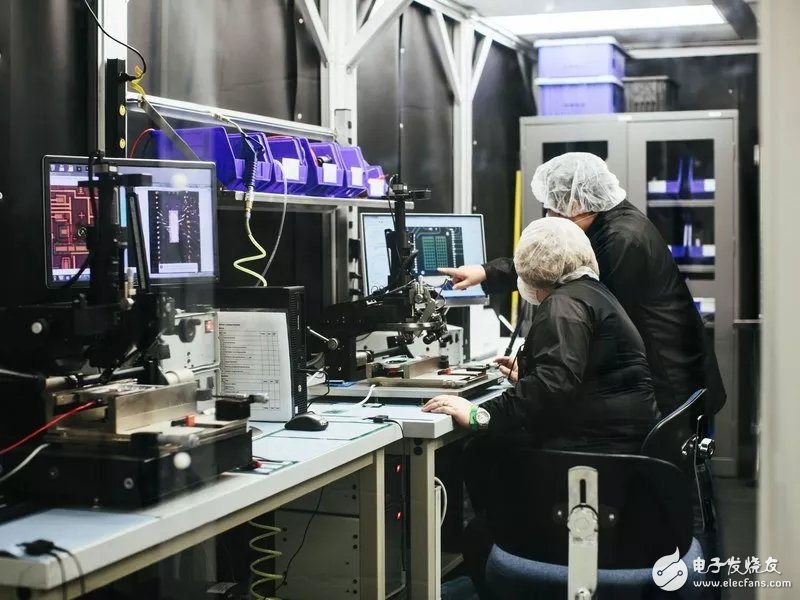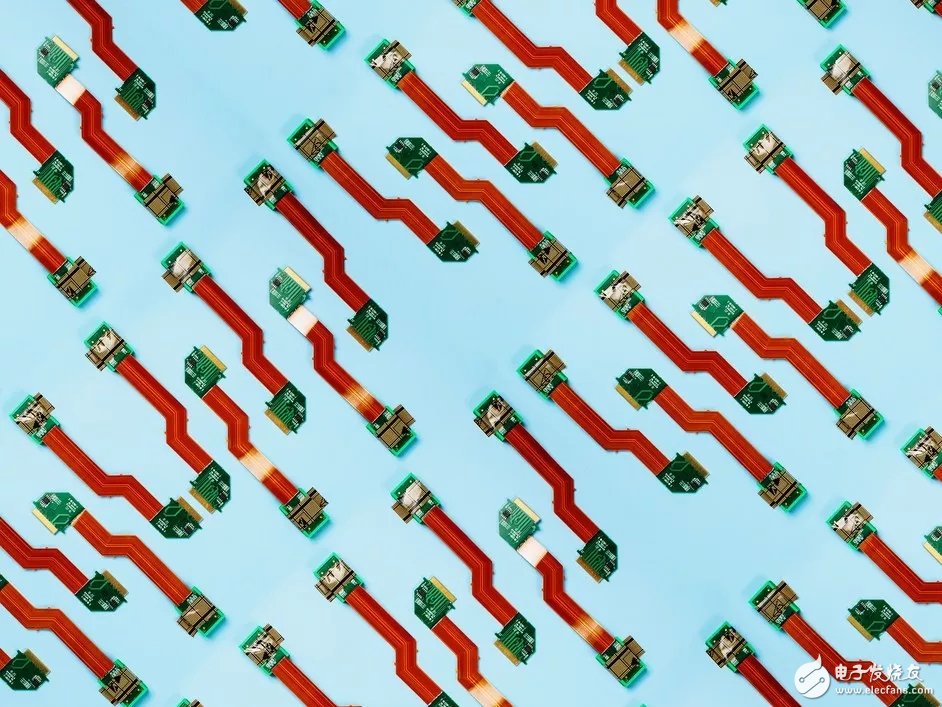Self-driving cars are about to embrace the golden age of it, and so are the laser sensors that help them see the world.
The laser radar emits millions of laser points per second and then plots the three-dimensional map around the car by measuring the time that these lasers are reflected back.
Since 2005, the laser radar has entered the research and development stage. At that time, a man named Dave Hall made a laser radar for the Darpa Challenge Competition, a self-driving car race. In the more than ten years since then, if people want to install a laser radar for autonomous vehicles, then Velodyne is the only choice.

However, in recent years, with the birth of many laser radar startups, Velodyne, once a monopoly, was threatened. Not to mention, many robotic car companies have found their own solutions.
Waymo, the automaker of Google's parent company, Alphabet, has spent years and millions of dollars developing a patented lidar system.
General Motors chose to acquire a laser radar startup called Strobe. Argo AI, which is building a robotic driving system for Ford, acquired a company called Princeton Lightware.
In the field of laser radar, the challenger is a Silicon Valley startup called Luminar. In September last year, the company received a $36 million investment from Toyota.

Recently, Luminar officially announced the launch of the latest laser radar device with an angle of view of 120 degrees (this is enough to see the objects in front of the car, but it is better to have such a pair of devices to obtain a 360-degree view).
After producing only 100 laser radar devices for the first time, Luminar was ready to make thousands of such devices. As a result, not only can the demand for laser radar in today's industry be met, but it is also possible to make autonomous vehicles cheaper for everyone.
“By the end of the year, we will have the capacity to equip almost all of the self-driving cars used for testing and development on a global scale,†said company CEO AusTIn Russell, who was from Stanford in 2012, when he was 17 years old. The university dropped out of school and used Luminar as his full-time job. “The laser radar is no longer a hand-made thing that relies on Dr. Optics, but will become a qualified car series.â€
At an 136,000-square-foot optical industrial center in Orlando, Luminar has reduced the manufacturing time of a laser radar device from approximately one day to eight minutes. In the past year, Luminar's number of employees has doubled to around 350. The company also hired Motorola's product specialist Jason Wojack to lead their hardware team. Alejandro Garcia from Harman, a supplier to the automotive industry, manages manufacturing.

At Luminar's production facility in Orlando, it is now possible to build a lidar device in about eight minutes - which used to take a day.
Last year, Velodyne opened a “mega factory†to boost capacity and build 10,000 laser sensors. The company's head of commercial development, Marta Hall (wife of Dave Hall), said that if the company is willing, it can make one million a year, but the ability to make a large number of lidars is not enough to win in this competition.
Lidar (laser locator) is a magical sensor that is not only more accurate than radar (radio detectors), but also more adaptable to the working environment than the camera. But one important question is that it is too expensive.
The cost of a top-grade lidar device from Velodyne that can view objects within a range of 300 meters from 360 degrees is about $75,000. Although volume purchases can reduce costs, it is still an unacceptable price for a fleet that can serve amortized costs for many years.
Luminar uses indium gallium arsenide (InGaAs) instead of silicon to make its lidar receiver (like the part of the retina in your eye), which makes cost issues even more difficult.
So why replace indium with indium gallium arsenide (InGaAs)?
The reason is that in order for the lidar to "see farther", it is necessary to emit stronger pulses of light, so they must be so strong that they have the power to concentrate distant objects and reflect them all the way back. Most laser radars use lasers with a wavelength of 905 nanometers. This is invisible to humans. But if it is concentrated in the eyes of a real person and has enough energy, it will damage the human retina. If you want to emit a stronger pulse without blinding humans, you can use a laser with a wavelength of 1550 nm, which is farther away from the visible light in the infrared portion of the spectrum (the longer the wavelength, the lower the energy, the farther it is from the visible light), so Can't penetrate the eye of the person.
Go back to the silicon issue. Receivers made of silicon are inexpensive, but lasers with a wavelength of 1550 nm cannot be detected. InGaAs (InGaAs) can be detected, but it is much more expensive than silicon. Therefore, the industry standard is to use a laser with a wavelength of 905 nanometers of silicon, but accept the fact that its energy is not so great that it can damage the human eye but cannot be sent so far.
But Russell insists on another option, 1550 nanometers, which means using a receiver made of InGaAs. As a result, Luminar's lidar can emit 40 times more pulses than its competitors, so its lidar can see extremely dark objects that absorb 95% of the light – even if the light is Issued 250 meters away. Russell said that no one's lidar can be seen so clearly at such distances.
However, it is not easy to manufacture a receiver using indium gallium arsenide (InGaAs). A large potato chip-sized receiver array could cost tens of thousands of dollars, so Luminar began to make the receiver himself.
Now, Luminar is already conducting the seventh iteration experiment. The size of the receiver is about the size of the strawberry seed (the whole device including the laser and the corresponding electronics is about half a foot wide and three inches deep). The receiver contains a chip that calculates the photon's time in the world in seconds, and costs only $3. This eliminates Luminar's concerns about cost and also makes additional wavelength ranges and resolutions possible.

A receiver in the Luminar Lidar device that detects reflected laser pulses that are the size of a strawberry seed and sell for only $3.
Russell is not willing to disclose the exact price of the entire laser radar, but he said that the company's customers are very satisfied. “Maybe when autonomous car manufacturers are finally ready to provide people with self-driving taxi services, they will not charge the passengers so much.â€
Luminar's R&D team also managed to increase the "dynamic range" of the receiver. Just as a human pupil expands according to lighting conditions, the lidar receiver is adjusted to accept a pulse of a certain intensity (the farther the photon goes before it is reflected back, the weaker it becomes). But when setting the range to accept a weak signal, if it is hit by a pulse that is much stronger than the set value, the receiver will be burned.
Russell said: "We have countless smashed detectors." At present, the device can cope with a large range of pulse intensity, and no smoke will be burned out.
At the same time, Luminar is already researching the next generation of sensors.
Russell said that the new generation of sensors will be cheap enough to be fully embedded in consumers' cars – truly turning the ability to “see†autonomous cars into something that people can afford.
Some client may feel that 10th Laptop is little old, so prefer 11th Laptop or 12th laptop. However, you will the 10th cpu is even more powerful than 11th, but price is nearly no difference, especially you take in lot, like 1000pcs. As a professional manufacturing store, you can see Laptop i3 10th generation 8gb ram,i5 laptop 10th generation, intel i7 10th gen laptop, etc. It`s a really tough job selecting a right one on the too many choices. Here are some tips, hope help you do that easier. Firstly, ask yourself what jobs you mainly need this Gaming Laptop to do. Secondly, what special features you care more? Like fingerprint, backlight keyboard, webcam rj45, bigger battery, large screen, video graphics, etc. Finally, ask the budget you plan to buy gaming laptop. Thus you will get the idea which laptop is right one for you.
Except integrated laptop, also have graphic laptop with 2gb or 4gb video graphic, so you can feel freely to contact us anytime and share your basic requirements, like size, cpu, ram, rom, video graphics, quantity,etc. More detailed value information provided in 1-2 working days for you.
10th Laptop,Laptop I3 10th Generation 8gb Ram,I5 Laptop 10th Generation,10th Generation Laptop,Intel I7 10th Gen Laptop
Henan Shuyi Electronics Co., Ltd. , https://www.shuyicustomlaptop.com